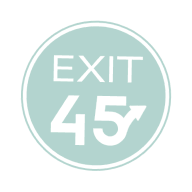Low or Inconsistent Gross Margins When Selling a Business
In Issue #57, we discussed the very common obstacle of Inadequate Seller’s Discretionary Earnings (SDE). This issue will provide insight on a related topic that is often the explanation for insufficient SDE – Low or Inconsistent Gross Margins.
"The essence of a successful business is really quite simple. It is your ability to offer a product or service that people will pay for at a price sufficiently above your costs, ideally three or four or five times your cost, thereby giving you a profit that enables you to buy and to offer more products and services." Brian Tracy
Low or Inconsistent Gross Margins When Selling a Business
Most of the time, Inadequate Seller’s Discretionary Earnings (SDE) in a small business is due to one of two reasons: (1) Low or Inconsistent Gross Margins; and/or (2) Inadequate Marketing and Sales Efforts. In many cases, it is a combination of both.
If an owner is dedicated to maintaining a strong gross margin, the company’s financial statements will show a consistent (or increasing) percentage of gross margin from year to year.
An example of a $3,000,000 increase in business valuation by increasing gross margins
Let’s look at a real life example of the effects of a low gross margin for a company that has 25 employees and about $1,000,000 in overhead:
- Sales (15,000 units@ $167)
- Cost of Goods Sold - (15,000 units@ $100), 60%
- Gross Margin - (15,000 units@ $67), 40%
- Overhead
- Net Profit
- Value of business: minimal or not saleable at all
- $2,500,000
- (1,500,000)
- 1,000,000
- (1,000,000)
- -0-
Over a period of time, the owner decided to increase his gross margins by raising selling prices. It was uncomfortable for his salespeople, but he stuck to his guns and over five years raised his prices by 28%. (The original sale price was $167, and at the end of the five-year period that same $100 product was being sold for $215.) Here’s what happened:
- Sales (15,000 units@ $215)
- Cost of Goods Sold - (15,000 units@ $100), 46.5%
- Gross Margin - (15,000 units@ $115) - 53.5%
- Overhead
- Net Profit
- Value of business: almost $3,000,000
- $3,225,000
- (1,500,000)
- 1,725,000
- (1,000,000)
- $ 725,000
Over a five-year timeframe, the Seller increased the value of his company by almost $3,000,000!!! He cashed out and, in retirement, he is very happy.
I’ve personally participated in the above scenario, though the example has been simplified. It was not a single product company. It’s just easier to understand an example of the effects of a conscious effort to raise gross margins by using a single product company.
Losing low-margin customers can be a good thing
For whatever reason, in my experience, most small business owners are not paying nearly enough attention to their gross margin line. Nothing can increase profitability more than a determined effort to increase the percentage made on each sale. Most organizations underestimate their overhead expenses and the value being provided to their customers. The majority of small businesses are afraid to raise margins for fear of losing customers. It’s the easy, laid-back way to sell a product or service, but does not maximize profit. If you’re only making the easy sales and not pushing your margins to the max, it will not reflect well on your bottom line. Some customer turnover can be a good thing. Sometimes you need to trade a marginally profitable customer for a better customer. Losing a marginal customer to a price increase forces you to look for the new customer.
Commit to increasing your gross margins
If an owner is dedicated to maintaining a strong gross margin, the company’s financial statements will show a consistent (or increasing) percentage of gross margin from year to year. But in my experience in evaluating businesses, more often than not I saw inconsistent or decreasing levels of gross margin. Simply stated, small business owners typically are not paying enough attention to that aspect of their business.
Do you know your gross margin percentage? Is it consistent, or all over the board? Have you and your salespeople committed to pushing to maximize the gross margin on each and every sale?
"Move out of your comfort zone. You can only grow if you are willing to feel awkward and uncomfortable when you try something new." Brian Tracy
Overcome the Power of Inertia
Overcome the Power of Inertia and call a business broker for a free consultation. Many brokers offer no-charge, no-obligation evaluations of small businesses. They can provide a broker opinion of value and help you identify obstacles to a successful sale as well as opportunities for improvement to increase the value of your business. That is a great way to start planning for a successful and profitable exit from your business.

